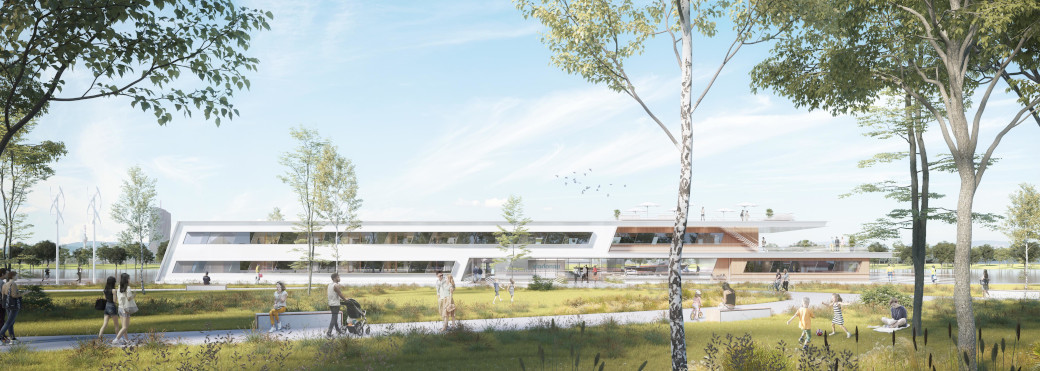plusenergy-FLAGSHIP: Plus-Energy office building 2.0 - the viadonau headquarters
Short Description
Starting point / motivation
Even though some buildings have already been realized that meet the „Plus-Energy" Standard, this standard has by no means reached the breadth that would be necessary to achieve substantial progress towards CO2 neutrality in the building sector.
Furthermore, there is a need for further development of the Plus-Energy Standard in the direction of a "Plus-Energy Standard 2.0" in various respects. This concerns, for example, the (increased) use of base-load capable renewable energy at the site, a stronger focus on energy storage or the integration of the mobility of the building users into the building concept.
Contents and goals
For the new corporate headquarters of viadonau, various innovations in the direction of a "Plus-Energy Standard 2.0" are to be implemented and combined in an overall concept in the course of this project. The "viadonau", a 100% subsidiary of the BMK with the objective of preserving and developing the Danube waterway on the Austrian section, will move into new a company headquarters with 120 users from 2024 on.
In accordance with viadonau's corporate goal of achieving climate neutrality by 2030, the new viadonau corporate headquarters will meet the highest energy efficiency standards and will be pioneering in particular with regard to the following innovations:
- Taking further steps towards energy autarky;
- CO2-neutral energy supply for heating and cooling (with a Danube water heat pump);
- Large battery storage: thus, grid relief and night-time operation possible without drawing grid power;
- Coupling of electromobility and buildings (conversion of the entire vehicle fleet to e-mobiles, awareness-raising of users, intelligent charging management);
- Highest/improved efficiency standards for equipment and building infrastructure (computers, lighting, measurement and control technology);
- Energetic and material use of the building's own wastewater (high-temperature biogas reactor (substrates: faeces, food waste) and use of the biogas by means of a fuel cell to provide electrical energy; production of fertilizer from urine by means of a VUNA plant).
The aim of the project is to implement the above innovations in an economically viable manner, to optimize them in practical operation and to demonstrate their multiplicativity and scalability for office and residential buildings in the city of the future. In addition, the project is also intended to promote innovation in the field of marine technology.
Methods
The following methods are used:
- Detailed building physics planning and optimisation of the individual components;
- Carrying out of thermal building simulations;
- Investigation of various system designs with regard to heat and cold distribution with integral cooperation of all areas.
- Subsequent installation and, in particular, commissioning (synchronisation of all automated systems) of all building services.
The energetic and material use of the wastewater is worked out by means of pre-engineering, monitoring, gas measurement (quality and quantity), plant support, 16 sRNA analysis of the microbiome, digestate purification on a laboratory scale, as well as by drawing up a balance sheet and LCA.
Expected results
An overall concept for the implementation of the thermal and electrical energy supply of the company headquarters in the direction of "Plus-Energy 2.0" is being developed and the highest possible degree of self-sufficiency of the building will be achieved after installation and commissioning of all measures. In the process, a test plant for the utilisation of organic residue streams and the recovery of energy and nutrients will be set up and put into operation.
Project Partners
Project management
Schöberl & Pöll GmbH
Project or cooperation partners
- Wien Energie GmbH
- BOKU Wien, Institut für Umweltbiotechnologie, Arbeitsgruppe Anaerobtechnologie (Biogas Forschungs- und Beratungsgruppe)
- TB-Starchel Ingenieurbüro GmbH
- SAUTTER ZT
- Dr. Alexander Keul - Umweltpsychologie, Angewandte Psychologie
Contact Address
Schöberl & Pöll GmbH
Lassallestraße 2/6-8
A-1020 Wien
Tel.: +43 (1) 726 45 66
E-Mail: office@schoeberlpoell.at
Web: www.schoeberlpoell.at

